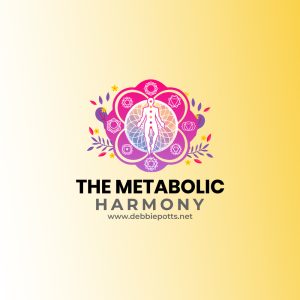Are you experiencing unexplained symptoms and weight gain mid-life?
Addressing menopause symptoms like vasomotor symptoms (hot flashes, night sweats), joint pain, visceral fat accumulation, vaginal atrophy, and more in the functional medicine and nutritional therapy space involves a root-cause and personalized approach rather than a one-size-fits-all method.
1. Vasomotor Symptoms (Hot Flashes, Night Sweats)
- Dr. Stacy Sims’ Perspective
- Emphasizes protein intake, strength training, and hydration to mitigate hot flashes and support thermoregulation.
- Recommends cold exposure (~16°C) to improve vascular response and reduce heat sensitivity.
- Highlights electrolyte balance (sodium, magnesium, potassium) to prevent dehydration-induced night sweats.
- Functional Medicine & Nutritional Therapy Approach
- Blood sugar balance (avoiding glucose spikes) reduces frequency/intensity of hot flashes.
- Phytoestrogens (flaxseeds, tempeh, miso) may help modulate estrogen levels.
- Adaptogens (ashwagandha, rhodiola) can support adrenal function to counteract cortisol-induced hot flashes.
- Magnesium + B6 supplementation can regulate neurotransmitters involved in thermoregulation.
2. Joint Pain & Inflammation
- Dr. Stacy Sims’ Perspective
- Strength training & plyometrics to maintain joint integrity and reduce stiffness due to estrogen decline.
- Omega-3s + collagen supplementation to support cartilage and joint lubrication.
- Functional Medicine & Nutritional Therapy Approach
- Eliminating inflammatory foods (processed sugars, seed oils, gluten) to reduce systemic inflammation.
- Targeted supplementation:
- Curcumin + Resveratrol for inflammation.
- Collagen + Vitamin C for connective tissue repair.
- Magnesium + B Vitamins for muscle and nerve function.
3. Visceral Fat Accumulation (Belly Fat)
- Dr. Carla DiGirolamo’s Approach
- Strength training over endurance cardio: Prioritizing resistance training to maintain lean mass and prevent metabolic slowdown.
- Hormone Optimization: For some, bioidentical hormone replacement therapy (HRT) can mitigate fat accumulation due to estrogen decline.
- Functional Medicine & Nutritional Therapy Approach
- Protein-first approach (~1.8-2.2g/kg of body weight) to prevent muscle loss & increase metabolic rate.
- Mitochondrial support (CoQ10, PQQ, NAD+) to boost energy production and combat metabolic sluggishness.
- Balancing cortisol:
- Reducing fasting & chronic stress (excess fasting raises cortisol, worsening fat storage).
- Adequate carb cycling (~30g pre-workout) to prevent metabolic downregulation.
4. Vaginal Atrophy & Dryness
- Dr. Carla’s Perspective
- Advocates estrogen therapy (if appropriate) for vaginal tissue integrity.
- Suggests regular sexual activity or pelvic floor therapy to maintain blood flow.
- Functional Medicine & Nutritional Therapy Approach
- Omega-3s, Vitamin E, and hyaluronic acid to support vaginal mucosa.
- DHEA & Vitamin D for hormone balance and collagen preservation in vaginal tissues.
- Probiotic strains (Lactobacillus rhamnosus & reuteri) to support vaginal microbiome health and prevent dryness/infections.
5. Cognitive Function & Mood Stability
- Dr. Stacy Sims’ Approach
- Emphasizes blood sugar stability + strength training to support brain health.
- Uses cold exposure to enhance dopamine & norepinephrine for mood stabilization.
- Functional Medicine & Nutritional Therapy Approach
- Lion’s Mane, Omega-3s, and Magnesium Threonate to support cognition & neuroplasticity.
- Targeting gut-brain axis with fermented foods & probiotics to regulate neurotransmitter production.
Final Thoughts
A functional medicine approach considers bio-individuality, testing for nutrient deficiencies, gut health imbalances, mitochondrial dysfunction, and hormone fluctuations to create a personalized plan that integrates nutrition, exercise, lifestyle, and targeted supplementation to optimize aging and alleviate menopause symptoms.
Understanding the Root Causes & Mechanisms Behind Menopause Symptoms
Menopause is marked by a significant hormonal shift, primarily the decline in estrogen (estradiol, E2), progesterone, and other key hormones. These changes trigger various physiological adaptations that lead to symptoms like hot flashes, joint pain, visceral fat gain, vaginal atrophy, and cognitive decline.
Let’s break down each symptom and its mechanism of action:
1. Vasomotor Symptoms (Hot Flashes & Night Sweats)
Cause:
- Declining Estrogen & Hypothalamic Dysregulation
- Increased Norepinephrine & Cortisol
Mechanism of Action:
- Estrogen normally regulates thermoregulation via the hypothalamus.
- As estrogen levels decline, the hypothalamus (body’s thermostat) becomes more sensitive to minor temperature fluctuations.
- The body overreacts, triggering:
- Sudden dilation of blood vessels (vasodilation) → Increased blood flow to the skin → Hot flashes
- Excess sweating to cool down the body → Night sweats
- Additionally, low estrogen increases norepinephrine, which further lowers the hypothalamic threshold, making vasomotor symptoms more frequent.
- High cortisol from stress worsens this sensitivity, increasing symptom severity.
Additional Factors:
- Blood sugar dysregulation (spikes & crashes) can increase norepinephrine release, worsening hot flashes.
- Dehydration & electrolyte imbalances exacerbate symptoms.
2. Joint Pain & Inflammation
Cause:
- Loss of Estrogen & Increased Pro-Inflammatory Cytokines
- Decline in Collagen Production
Mechanism of Action:
- Estrogen is anti-inflammatory and protects joint tissues by inhibiting inflammatory cytokines like TNF-alpha and IL-6.
- As estrogen declines, there’s an increase in pro-inflammatory cytokines, leading to:
- Cartilage degradation
- Joint stiffness & pain (similar to osteoarthritis)
- Reduced synovial fluid, causing “creaky” joints
- Estrogen also stimulates fibroblasts to produce collagen → Without estrogen, collagen synthesis decreases, leading to weaker connective tissue and joint degeneration.
Additional Factors:
- High cortisol (from stress or overtraining) breaks down muscle & collagen further, accelerating joint issues.
- Poor gut health & dysbiosis increase systemic inflammation, exacerbating joint pain.
3. Visceral Fat Accumulation (Belly Fat Gain)
Cause:
- Declining Estrogen & Increased Insulin Resistance
- Elevated Cortisol & Metabolic Slowdown

Mechanism of Action:
- Estrogen normally promotes insulin sensitivity and prevents fat accumulation.
- With low estrogen, there’s:
- Increased insulin resistance → More glucose is stored as fat instead of used for energy
- Reduced ability to utilize fat for fuel, leading to more fat deposition around organs (visceral fat)
- Cortisol levels rise due to stress, sleep deprivation, or overtraining.
- Cortisol promotes fat storage in the abdominal region via upregulation of lipoprotein lipase (LPL), an enzyme that encourages fat accumulation in visceral adipose tissue.
- Mitochondrial dysfunction due to aging further slows fat metabolism.
Additional Factors:
- Chronic fasting or excessive low-carb dieting in postmenopausal women can increase cortisol, worsening visceral fat gain.
- Poor sleep and circadian rhythm disruption lead to elevated ghrelin (hunger hormone) and lower leptin (satiety hormone), promoting overeating and weight gain.
4. Vaginal Atrophy & Dryness
Cause:
- Declining Estrogen & Reduced Blood Flow
- Changes in the Vaginal Microbiome
Mechanism of Action:
- Estrogen maintains vaginal moisture, elasticity, and blood flow.
- As estrogen declines:
- Vaginal tissues thin and lose elasticity.
- Glands produce less lubrication, leading to dryness and discomfort.
- Blood flow to vaginal tissues decreases, reducing oxygen and nutrient supply.
- Estrogen also supports the vaginal microbiome, particularly Lactobacillus species, which help maintain an acidic pH.
- Without estrogen, vaginal pH increases (becomes less acidic), allowing harmful bacteria to thrive, increasing the risk of infections and discomfort.
Additional Factors:
- Chronic stress & elevated cortisol can further deplete DHEA, which is a precursor for estrogen, worsening vaginal dryness.
- Low omega-3 levels & dehydration can exacerbate dryness.
5. Cognitive Changes & Mood Instability
Cause:
- Estrogen’s Role in Neuroprotection & Neurotransmitter Regulation
- Blood Sugar Dysregulation & Increased Inflammation
Mechanism of Action:
- Estrogen plays a critical role in brain function by:
- Enhancing glucose metabolism in the brain (via astrocyte activation)
- Increasing serotonin & dopamine production for mood regulation
- Protecting neurons from oxidative stress
- As estrogen declines:
- Brain glucose metabolism slows, leading to brain fog, memory issues, and cognitive decline
- Serotonin levels drop, increasing mood swings, anxiety, and depression
- Inflammation rises, further impairing brain function
- Blood sugar fluctuations (due to insulin resistance or poor diet) also disrupt neurotransmitter production, leading to brain fog and mood swings.

Additional Factors:
- Sleep disturbances (common in menopause) further impair memory and mood regulation.
- Chronic stress and excess caffeine worsen the decline of serotonin and dopamine.
Summary of Mechanisms
| Symptom | Root Cause | Mechanism of Action |
|---|---|---|
| Hot Flashes | Low estrogen & hypothalamic dysregulation | Increased norepinephrine lowers temperature threshold, triggering vasodilation & sweating |
| Joint Pain | Loss of estrogen & increased inflammation | Less collagen production & synovial fluid, higher TNF-alpha & IL-6 |
| Visceral Fat | Insulin resistance & high cortisol | Increased fat storage via lipoprotein lipase (LPL), reduced fat oxidation |
| Vaginal Atrophy | Estrogen decline & microbiome changes | Reduced vaginal lubrication, tissue thinning, higher pH promoting infections |
| Cognitive Issues | Low estrogen & impaired glucose metabolism | Less serotonin, dopamine, and neuroprotection, increased oxidative stress |
Key Takeaways & Functional Medicine Approach
- Menopause symptoms arise due to hormonal shifts, inflammation, mitochondrial dysfunction, and metabolic changes.
- Addressing these symptoms requires a root-cause approach, including:
- Nutrient-dense, protein-rich diet to combat muscle loss, joint pain, and visceral fat.
- Strength training + metabolic conditioning to preserve insulin sensitivity and maintain lean mass.
- Targeted supplementation (Omega-3s, Magnesium, Vitamin D, DHEA, and Adaptogens) to support hormone balance.
- Cold & heat exposure to improve vascular and mitochondrial function.
-
